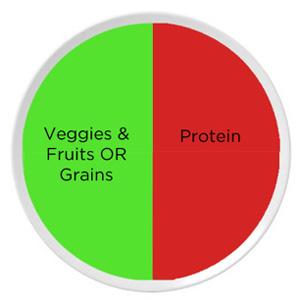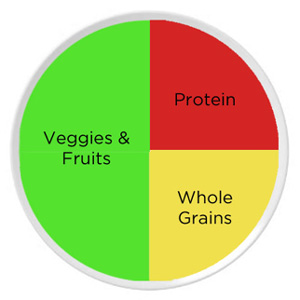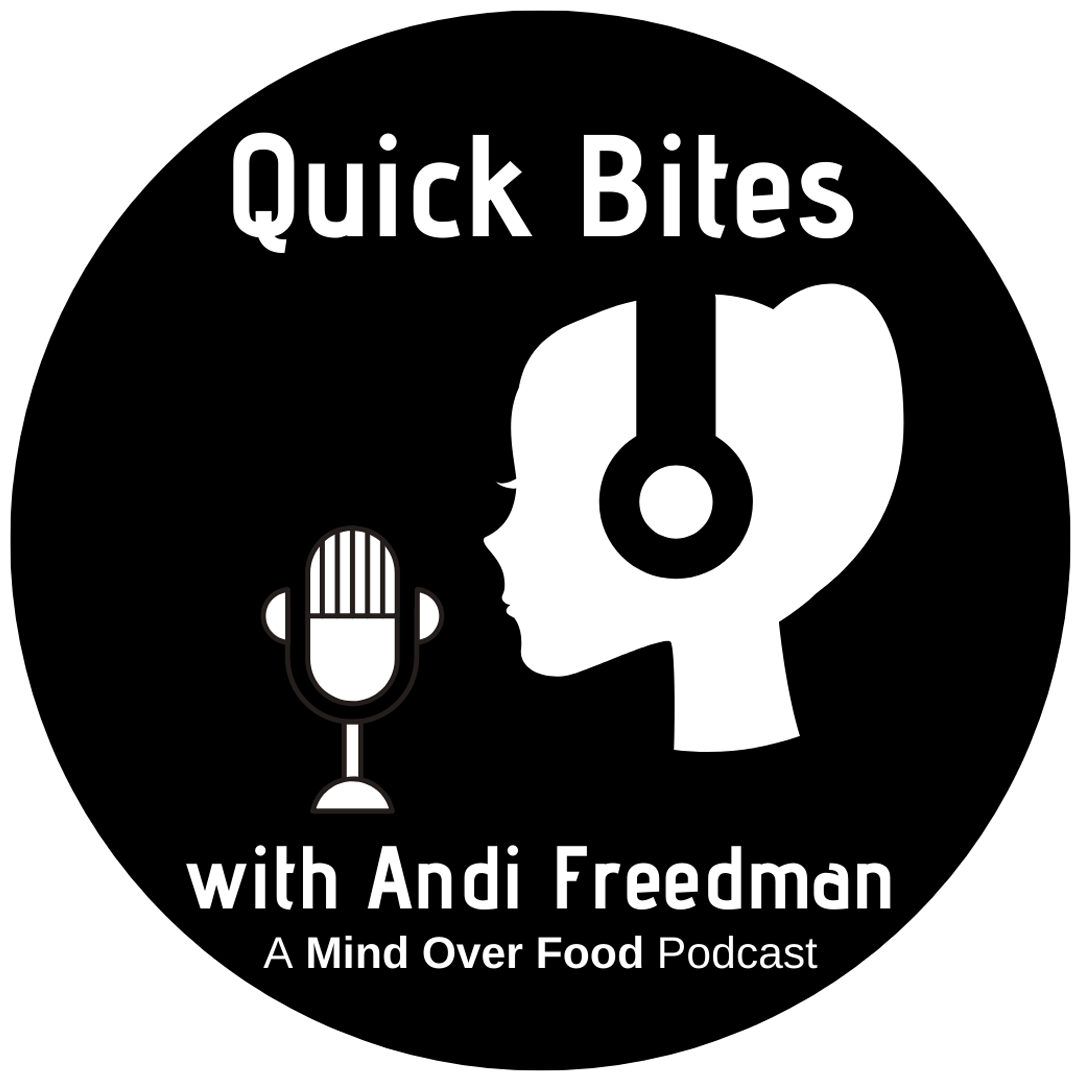Some people do well with counting calories. Others, however, can find it tedious and difficult to measure accurately. This can, and often does, lead to underestimation of the number of calories we consume each day. Clients I work with usually find it easier (and less time consuming) to focus on how to fill their plate.
First let’s talk about plate size. Several scientific studies have shown that by simply reducing plate size one can reduce the number of calories consumed. Apparently plate sizes have increased significantly in the last 50 year… a 22% increase. I suggest that you eat off a plate that is no more than 10″ in diameter. At my house, we use 9″ glass plates that we bought from IKEA.
Once you have an appropriately sized plate, how you fill it is very important. I suggest the following guidelines:
For Breakfast or for a Snack:

Breakfast is of course a bigger meal and your snacks should be in the 100-200 calorie range.
Lunch and Dinner should look like this: Usually dinner and lunch are a little bit bigger than Breakfast depending on how you like to distribute your meals throughout the day.

You may notice that I recommend protein at every meal. This is very important because current research suggests that protein is essential for a healthy diet. The Harvard Medical School recommends that 15–25% of your calories come from lean protein sources (more if you are more active). It makes sense, while carbohydrates are the fuel; the building blocks of our bodies and the processes by which they function are dependent on protein. If you struggle with finding appropriate protein sources or don’t know where to start, click here or see the infographic below!
Following these guidelines can really help you make a healthy meal without too much calorie counting or fuss! Let me know how it works for you!

Infographic by Positive Health Wellness
